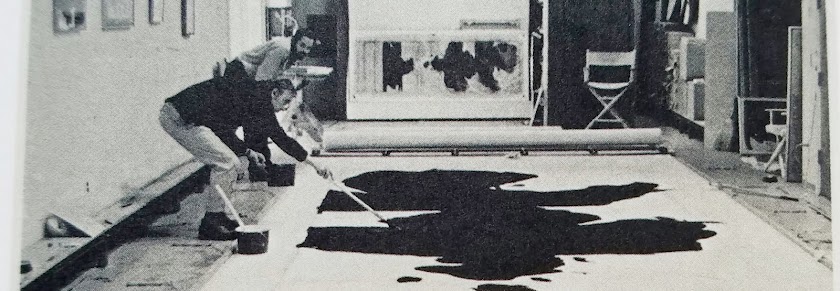
Barn kitchen 'before': Bartley standing slightly outside the demolished, original kitchen wall on 11 January 2018. After the cracked 90s kitchen slab was sledgehammered out by hand we laid tapered, wood floor 'sleepers' on 16" centers to make the original slanted barn slab level - where the cows were fed in 1947.
#kitchen #demolition #olddairybarn #1947 #goodbye #wall #slab #wiring #insulation #flooring #plumbing #sheetrock #framing #windows #doors #prettymuch #backtobasics #forget #fixerupper #magic #thisis #brutal #winter #labor
A Barn Restoration Project
Many of our friends and long-time observers of these pages will have noticed that I have been AWOL from this blog for over two years. I apologize for the absence. In August of 2017 Bartley, Evie and I began work on the repair and restoration of a 1947 dairy barn in Sharon, CT. As is often the case, I worked on it seven-days a week for just short of two years. In early fall of 2019 we finally moved in!
Above is one of the many 'before' pictures taken of this project. I will be periodically adding additional photos and stories to this post to give you a better idea of the scope of the project and to describe how we designed it. By the way, even though we now live here, it still is not completely done! So please be patient! Some of the photos and stories that follow are taken from my Instagram account called #scofieldartdesign.
The barn is sited adjacent to a large, very handsome wetland. Here is a photo of it in September of 2019. It's filled with many birds from large to very small, recently including a male Northern Harrier and some Wild Turkeys. In the foreground is part of a sculpture I made called 'The Sawyer.'

I like to take a morning constitutional between 6.30 and 7; when the fog is lifting across the watermeadow. A big green landscape balanced by a little Persian red. Foreground detail of morning dew on sculpture 'The Sawyer.'
#watermeadow #grasses #lifting #fog #distant #green #landscape #view #red #sculpture #nwct #dew #september #inthecountry #cool #fall #air #happy #girls #living #here

The barn living-room. Spring, 2019. Very exciting to have scaffolding removed! Continuing to install interior window casing and trim. New sheetrock. Early morning sunshine.
#interior #space #morning #december #sunshine #nwct #inthecountry #landscape #olddairybarn #renovation #artistsbarn #project #humanscale #familygoals #MoMAartist #makeahome #formygirls
Recent Personal and Business Events / Online Shopping
Bartley: As you all know, the virus lock-down has affected everything in the World. On 18 March Bartley's ladies clothing store in Sharon, CT was shuttered by the state of CT as a non-essential business. She quickly established an online site so that her customers could continue to make purchases from the safety of their homes.
Her website is: B.Johnstone&Co.
Please take a look at Bartley's very high-quality new and vintage pieces. It is also possible to private message her on the site with specific questions.
John: In January I completed a commission for a large painting on canvas entitled, 'The Arkansas River.' It is now installed in it's new home in Little Rock (see below).
I have many paintings, pieces of sculpture, drawings and completed art-furniture pieces that are available at very good prices due to the Covid-19 lock-down. A good place to view much of the work is on my Instagram site: #scofieldartdesign on your cell phone.
Or at https://www.picuki.com/profile/scofieldartdesign online.
You can call me at 860-671-0153 or by e-mail at johneverettscofield@gmail.com
We hope that everyone stays safe and healthy.
Bartley, Evie and John

















































